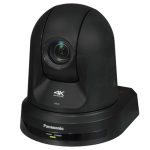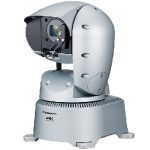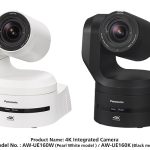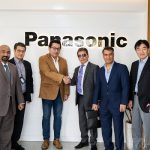Panasonic GH3 is a compact professional camera offering innumerable shooting options. Andrew Clemson, a Dubai-based cinematographer and digital cinema specialist, checks out the cameras performance Since professional production-capable cameras became smaller with the advent of the DSLR boom, more and more features are being packed into ever tinier packages. I shoot most work on RED […]

Panasonic GH3 is a compact professional camera offering innumerable shooting options. Andrew Clemson, a Dubai-based cinematographer and digital cinema specialist, checks out the cameras performance
Since professional production-capable cameras became smaller with the advent of the DSLR boom, more and more features are being packed into ever tinier packages.
I shoot most work on RED cameras, but often need a smaller camera for either easily repositioned second angle shots, or simply for size. Ive used the 5D Mark 2 for many years. Although it is still a great camera, its capabilities have become somewhat outdated. When weighing the options for a replacement, I became interested in the many smaller options that have hit the market.
The GH3 is a replacement for Panasonics super-popular GH2, and is similar in size to one of Canons entry level cameras (such as the Rebel/T5i). It sports a Micro Four Thirds Sensor (MFT between 16mm and APS-C/S35mm) and MFT lens mount, so your current lens line-up will not work straight off the bat, if you are coming from a DSLR background.
The great thing about a Mirrorless MFT system is that it makes it easier to adapt to the other lens systems. A quick browse on the internet will pop up options to pretty much any lens you have from Canon EOS, to Nikon, to PL to OCT18 (as long as you are happy being limited to manual control).
If you have manual Iris lenses, or you are happy having your lenses forced wide open, then a cheap MFT-EOS or F mount adapter can be found online for next to nothing. I used one from eBay in order to use both my Zeiss primes and Canon L series zooms and had no issues. There are more expensive options, such as the Kippon MFT-EOS adapter ($195), which adds an artificial iris (within the adapter) or the Redrock Micro Livelens ($595) which allows manipulation of Canon lenses electronically. The only drawback to this is that your lenses will act differently due to the crop factor of using APS-C or full frame lenses on a smaller sensor. The Metabones MFT-EOS Speedbooster/focal reducer, which is expected to arrive this year (similar to the E-Eos mount for Sony cameras) would effectively make the sensor S35 in size and provide an extra stop of light on the low end. If and when it arrives, it would make this camera a little powerhouse of sorts.
If you want to know how your lenses will act on the MFT sensor of the GH3, then there are a number of options available to you. There are excellent iPhone apps such as P-Cam, or you can use the field of view calculator available at http://www.abelcine.com/fov/ (use the Panasonic AF100 sensor for size reference of the GH3 as they share the same sensor size).
However, for the purpose of this review, I also had two Panasonic Lumix zooms at my disposable, and to be honest, if you have the money to invest then you cannot go wrong. The 12-35mm and 35-100mm Panasonic Lumix lenses are both F2.8 (the same as the Canon L series zooms) and fully stabilised (like the Canon 24-105) giving you an effective stabilised range of 12-100, which is something you simply cannot do with Canon L zooms.
The Lumix lenses will also work perfectly on other MFT cameras, such as the Blackmagic Pocket Cinema Camera (BMPCC, if it ever ships) However, on the 16mm sensor of the BMPCC, there will be the crop factor to deal with. Even with the crop, they are likely to be the most sought after lenses for the GH3 and the BMPCC.
Lenses can be manipulated to achieve longer focal lengths by using the Ex-Tele option in the cameras menu, effectively cropping the sensor but maintaining the same resolution. Using this mode also allowed me to shoot with older lenses that I have bought for the Blackmagics S16mm sensor by cropping, in order to avoid the vignette caused by the GH3s larger sensor.
Unlike its predecessor, the GH3 has added the option to shoot Quicktime files rather than just AVCHD, which is a huge improvement in terms of post production. These files can also be recorded at a much higher bit rate (up to 72mbs) and at frame rates of up to 60P at 1920X1080, unlike the 5D which requires you to drop to 720P to shoot slow motion.
Given that other cameras (including the GH2, and even GoPro) allow higher frame rates at lower resolutions, it would have been useful to have another frame rate such as 100fps at 720P but perhaps, Panasonic has done the right thing by ensuring everything is acquired at 1080P rather than at varying resolutions.
The slow motion is offered at either 60P (for slowing down in post) or shooting at 25P with an in-camera slow motion recording. I didnt notice a major difference between the two, but if you are editing the footage yourself, it probably makes more sense to shoot the 60P and give yourself options for post. However, if youre handing the footage to post after that, you could argue that it is better to shoot in-camera, so the off-speed footage is easily identifiable to the editors. Just make sure, if youre doing the former, you check for flicker, as this camera does seem to suffer from it more than its peers.
Despite the fact that the GH3 offers a clean image out via the miniHDMI port, I couldnt see the difference when compared to the images recorded to the internal SD card. Adding an external recorder, even as small as a nanoflash or a hyperdeck bulks this camera up, defeating the very purpose of shooting on such a small camera.
I shot all day on a single battery, although the GH3 takes SD cards. I also used one of the microSD cards from my GoPro Hero3s in an SD adapter and saw no noticeable difference.
The GH3 offers pretty good quality audio for scratch sound on its built-in mics. It also offers the ability like other cameras to mount an external mic like the Rode Videomic or a stereo mic via the hot shoe and 3.5mm input. You can then monitor the audio levels in the camera. The rear LCD on the GH3 swivels out to the side and is great for most run-and-gun situations. When it comes to critical focus, or if you are shooting outside, and dont have a viewfinder loupe such as the Zacuto Zfinder or an equivalent, then the GH3 also has a very good OLED viewfinder which works even in video mode.
The GH3 does, of course, have an HDMI out, enabling electronic viewfinders like the Zfinder EVF, Cineroid, Alphatron or SmallHD DP4 to work perfectly with it. This is also true of monitors, and to be honest, the best option for the GH3 is probably the small HD DP4 as it offers the ability to use it as a small monitor or an EVF in one package.
Moire is more evident on the GH3 as compared to the GH2, but it is way better than on comparatively priced and similar sized DSLR bodies. I really didnt have any issues with it. The GH3s low light capabilities are also good, but certainly, nothing close to those of the higher-end Canon or Nikon bodies. The camera performs better than its predecessor GH2, and can go up to ISO800 clean. You could certainly use footage shot at higher ratings, but if you are shooting in the dark then the Nikon D800 or Canon 5D Mark III are certainly the better options. You can bolster the GH3s low-light performance by adding faster lenses such as the Canon F1.2 primes or MFT options such as the SLR Magic or Leica F0.95 lenses, but the tradeoff is that your depth of field becomes so razor thin that keeping focus becomes very difficult.
For most people like myself, when it comes to choosing a compact back-up camera, the choice will be between the GH3 and the Blackmagic Pocket Cinema Camera. While the Blackmagic camera offers more in terms of elasticity in the recorded image owing to RAW recording and a greater dynamic range, the GH3 offers slow motion recording (the BMPCC only shoots up to 30P) and a native M4/3 sensor which will match readily available lenses without cropping.
The GH3 is a great camera, which offers innumerable options and if you want a portable, compact unit that can also shoot slow motion, then there really isnt anything else on the market that can compete, especially not at this price point.
















































































